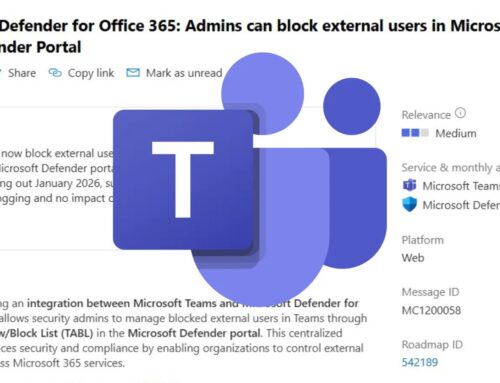
Breaking the Passkey Promise: SquareX Discloses Major Passkey Vulnerability at DEF CON 33
For too long, the digital world has grappled with the inherent weaknesses of traditional passwords. Phishing attempts, brute-force attacks, and credential stuffing remain ceaseless threats, eroding trust and compromising countless accounts. In response, the industry championed passkeys – a revolutionary, passwordless authentication method leveraging cryptographic key pairs to offer seemingly impenetrable security via biometrics or hardware tokens. Endorsed by the FIDO Alliance, passkeys have seen astronomical adoption, with over 15 billion accounts now passkey-enabled. The promise was clear: enhanced security, simplified user experience, and a definitive end to password-related woes. However, recent revelations from SquareX at DEF CON 33 have cast a significant shadow on this perceived invulnerability, disclosing a major passkey vulnerability that demands immediate attention from cybersecurity professionals and end-users alike.
The Promise of Passkeys: A Brief Overview
Passkeys fundamentally transform the authentication paradigm. Instead of relying on a shared secret (the password), they utilize a pair of cryptographically linked keys: a public key stored on the service provider’s server and a private key securely held on the user’s device (e.g., smartphone, hardware security key). When a user attempts to log in, their device uses the private key to sign a challenge from the service. The service then verifies this signature using the stored public key. This process offers several distinct advantages:
- Phishing Resistance: Passkeys are inherently bound to the origin of the website, making them resistant to phishing sites that attempt to trick users into revealing credentials.
- Strong Cryptography: Reliance on public-key cryptography provides a robust security foundation.
- User Convenience: Authentication often involves a simple biometric scan (fingerprint, facial recognition) or a hardware token tap.
- No Shared Secrets: There’s no password to be stolen from a database breach, eliminating a common attack vector.
The rapid adoption, fueled by major tech companies embracing the standard, underscored the industry’s confidence in this technology. Yet, as with any emerging security solution, rigorous scrutiny is paramount.
SquareX Uncovers Critical Passkey Vulnerability at DEF CON 33
The cybersecurity community converged at DEF CON 33 expecting insights into cutting-edge threats and innovations. SquareX, a renowned cybersecurity firm, did not disappoint, delivering a presentation that fundamentally challenged the perception of passkey invincibility. While specific details regarding the vulnerability, including its CVE identifier, are still emerging from the conference, the disclosure points to a significant flaw that undermines the core security assurances of passkeys. This vulnerability suggests that despite their cryptographic strength and phishing resistance through origin binding, certain attack paths or implementation flaws can compromise the integrity of passkey authentication.
Without a specific CVE, it’s crucial to monitor official advisories from FIDO Alliance and vulnerability databases for comprehensive technical details and impact assessments. The ramifications could affect any of the 15 billion passkey-enabled accounts, depending on the nature and scope of the flaw.
Understanding the Implications for Organizations and Users
The SquareX disclosure necessitates a re-evaluation of security postures for organizations that have widely adopted passkeys and for individuals who rely on them for daily authentication. The implications are far-reaching:
- For Organizations:
- Risk Assessment: Organizations must immediately assess their exposure and the potential impact if the vulnerability affects their passkey implementations.
- Vendor Liaison: Proactive engagement with FIDO Alliance members and authentication solution providers to understand patches, workarounds, or best practice updates.
- Incident Response Planning: Update incident response plans to account for potential passkey compromise scenarios.
- User Education: Prepare to educate users on any necessary actions or temporary safeguards.
- For Users:
- Stay Informed: Monitor news from their service providers regarding advisories or required actions.
- Device Security: Ensure devices storing private keys are up-to-date with the latest security patches and are protected by strong device-level authentication (PIN, biometrics).
- Hardware Keys: If using hardware security keys, ensure their firmware is up-to-date.
Remediation Actions and Mitigations
While the exact remediation steps will depend on the specifics of the disclosed vulnerability (which are pending a formal CVE assignment and detailed public disclosure), general best practices and proactive measures are essential:
- Monitor Official Disclosures: Actively follow announcements from the FIDO Alliance, prominent passkey providers (e.g., Google, Apple, Microsoft), and vulnerability databases. This is the primary source for validated CVE numbers, attack vectors, and specific patches.
- Apply Patches and Updates: As soon as official patches or firmware updates are released by operating system vendors, browser developers, or passkey service providers, apply them without delay.
- Multi-Factor Authentication (MFA): Even when using passkeys, where supported, additional MFA layers can provide defense-in-depth, particularly for high-value accounts.
- Regular Security Audits: Organizations should conduct frequent security audits of their authentication infrastructure, including passkey implementations, to identify and rectify potential weaknesses.
- User Awareness Training: Reinforce strong security hygiene practices among users, emphasizing the importance of keeping devices secure and reporting suspicious activity.
- Review Passkey Implementations: Developers should review their passkey integration code for common pitfalls and ensure adherence to the latest FIDO specifications and security best practices.
Relevant Security Tools for Detection and Mitigation
While direct tools for a yet-to-be-detailed passkey vulnerability are speculative, the following categories of tools are vital for maintaining overall authentication security and responding to potential threats:
| Tool Name | Purpose | Link |
|---|---|---|
| Security Information and Event Management (SIEM) Systems | Aggregates and analyzes security logs from various sources (including authentication servers) to detect anomalous behavior and potential compromises. | Gartner Peer Insights SIEM Reviews |
| Vulnerability Scanners | Identifies known vulnerabilities in web applications and underlying infrastructure, which could include the servers hosting passkey public keys or related authentication logic. | Tenable Nessus |
| Passwordless Authentication Solutions (with robust security features) | Many vendors offer comprehensive authentication platforms. While passkeys are a core technology, robust platforms will have additional security layers and quick patch capabilities. | FIDO Alliance Members (for certified compatible solutions) |
| Endpoint Detection and Response (EDR) Solutions | Monitors end-user devices (where private keys reside) for malicious activity, potentially detecting compromises that could expose passkeys. | CrowdStrike Falcon Insight EDR |
Conclusion: Renewed Vigilance in the Age of Passwordless
The disclosure by SquareX at DEF CON 33 serves as a stark reminder that no security technology, regardless of its promise, is entirely immune to vulnerabilities. While passkeys represent a significant leap forward from password-based authentication, this incident underscores the perpetual need for rigorous testing, constant vigilance, and responsible disclosure within the cybersecurity community. As the industry awaits the specific details and a formal CVE identifier for this vulnerability, organizations and individuals must remain proactive, prioritizing security updates, user education, and a layered defense strategy. The journey towards a truly passwordless future is undoubtedly paved with innovation, but it also demands unwavering commitment to identifying and mitigating its inherent risks.





